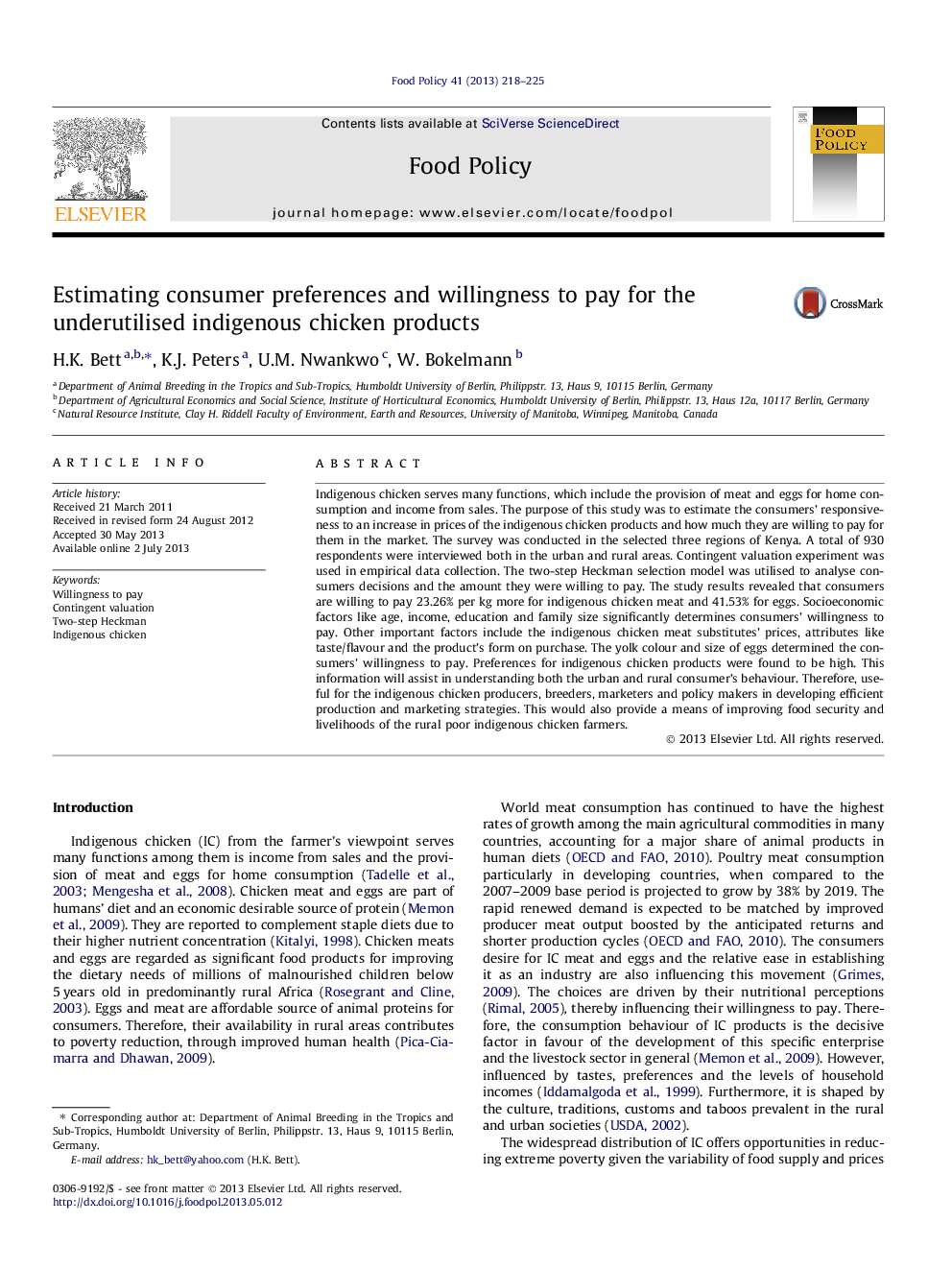| Article ID | Journal | Published Year | Pages | File Type |
|---|---|---|---|---|
| 5070655 | Food Policy | 2013 | 8 Pages |
Abstract
Indigenous chicken serves many functions, which include the provision of meat and eggs for home consumption and income from sales. The purpose of this study was to estimate the consumers' responsiveness to an increase in prices of the indigenous chicken products and how much they are willing to pay for them in the market. The survey was conducted in the selected three regions of Kenya. A total of 930 respondents were interviewed both in the urban and rural areas. Contingent valuation experiment was used in empirical data collection. The two-step Heckman selection model was utilised to analyse consumers decisions and the amount they were willing to pay. The study results revealed that consumers are willing to pay 23.26% per kg more for indigenous chicken meat and 41.53% for eggs. Socioeconomic factors like age, income, education and family size significantly determines consumers' willingness to pay. Other important factors include the indigenous chicken meat substitutes' prices, attributes like taste/flavour and the product's form on purchase. The yolk colour and size of eggs determined the consumers' willingness to pay. Preferences for indigenous chicken products were found to be high. This information will assist in understanding both the urban and rural consumer's behaviour. Therefore, useful for the indigenous chicken producers, breeders, marketers and policy makers in developing efficient production and marketing strategies. This would also provide a means of improving food security and livelihoods of the rural poor indigenous chicken farmers.
Related Topics
Life Sciences
Agricultural and Biological Sciences
Food Science
Authors
H.K. Bett, K.J. Peters, U.M. Nwankwo, W. Bokelmann,
